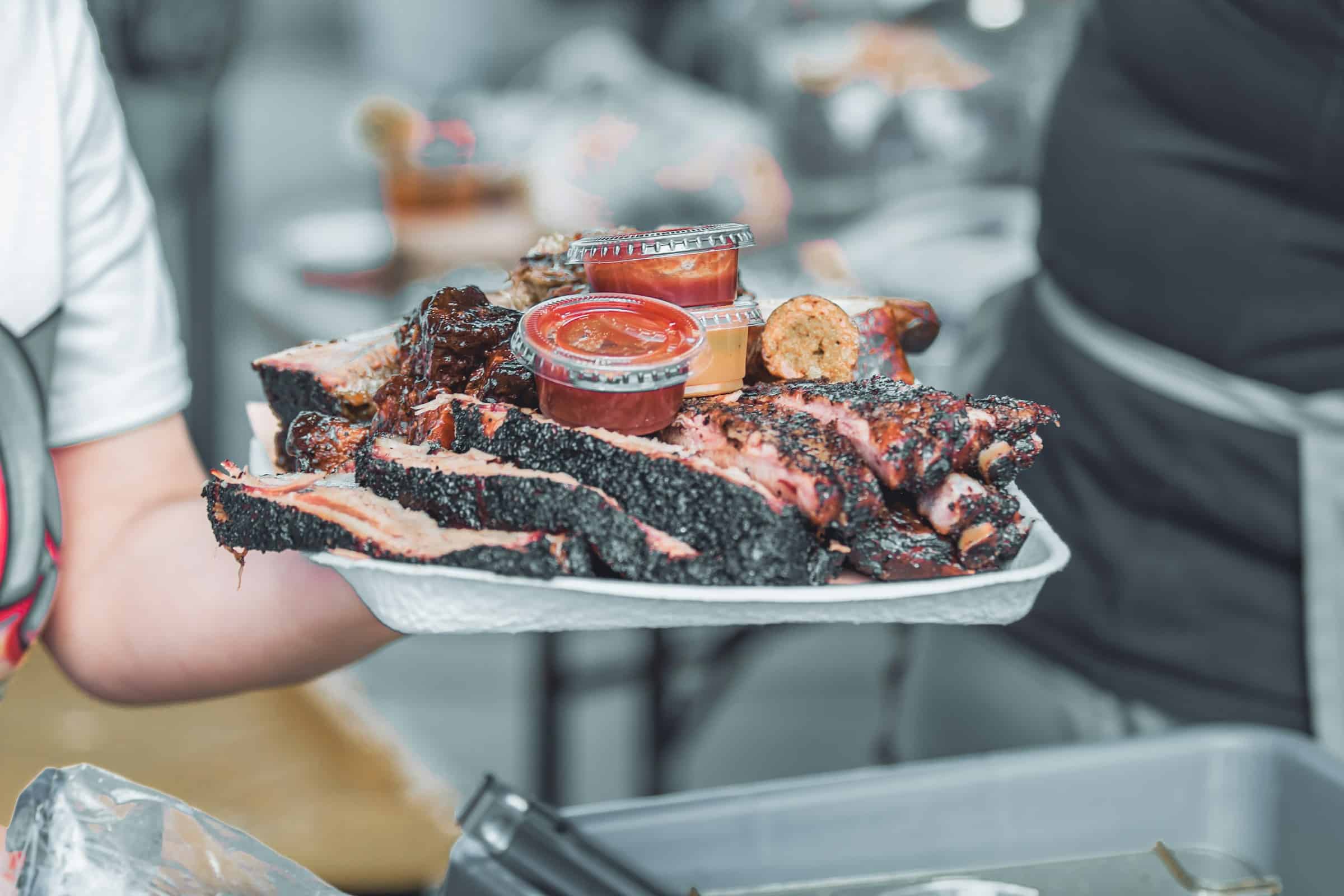How to Master the Technique of Smoking Brisket for Ultimate Flavor and Tenderness?

There’s nothing quite like the smoky, savory flavor of a well-cooked brisket. Yet, achieving that perfect balance of smokiness, flavor, and tenderness can be a daunting task. But don’t worry, we are here to guide you on this journey. This article will provide you with the information and techniques you need to take your brisket-smoking skills to the next level.
Understanding the Basics of Brisket
Brisket is a cut of meat from the lower chest or breast of a cow. It’s known for being tough and fibrous, which is why it requires slow cooking methods, like smoking, to break down the collagen and achieve a tender result. Let’s delve into the fundamental elements you need to understand before we move on to the actual smoking process.
Additional reading : What’s the Best Way to Prepare a Delicate Crab Bisque with Fresh Herbs?
Selecting the Right Brisket
Choosing a high-quality brisket is the first step towards a mouth-watering smoked brisket. You need a cut with a good amount of marbling, the streaks of fat that run through the meat. This fat melts during the cooking process, contributing to the brisket’s flavor and tenderness. Prime grade beef generally has the most marbling, followed by choice and select.
Another thing to consider when selecting your brisket is its size. A whole or "packer" brisket, which includes both the flat (leaner, thinner section) and the point (fatter, thicker section), usually weighs between 10 to 12 pounds. This size is ideal for smoking as it has enough fat to keep the meat moist during the long cooking process.
Also to see : What are the best practices for creating a gourmet fig and prosciutto pizza with arugula?
Preparing Your Brisket for Smoking
Once you’ve chosen your brisket, you need to prepare it for smoking. This includes trimming the fat cap, the layer of fat on one side of the brisket, to about 1/4 inch thickness. Too much fat can prevent the smoke from penetrating the meat, while too little can cause the brisket to dry out.
After trimming, it’s time to add your rub. A basic brisket rub can be as simple as equal parts salt and pepper, also known as a "Dalmatian rub." However, feel free to experiment with other spices to suit your taste. Apply the rub evenly over the brisket, pressing it into the meat to ensure it adheres.
Understanding the Smoking Process
Now that we’ve covered the basics of choosing and preparing your brisket, let’s move on to the actual smoking process. This is where the magic really happens and where your brisket will transform into a tender, flavorful delight.
Choosing Your Wood
The type of wood you use for smoking can significantly impact the flavor of your brisket. Different woods impart different flavors. For example, hickory and oak wood give a strong, smoky flavor, while apple and cherry wood offer a milder, sweeter taste. It’s important to choose a wood that complements the flavors of your brisket rub.
Controlling the Temperature
One of the most critical aspects of smoking brisket is maintaining a consistent temperature throughout the cooking process. The ideal smoking temperature for brisket is between 225 and 250 degrees Fahrenheit. Keeping the smoker at this temperature allows the brisket to cook slowly, breaking down the tough connective tissues and rendering the fat, resulting in a tender and juicy brisket.
Monitoring the Cooking Time
As a general rule of thumb, a whole brisket takes about 1 to 1.5 hours per pound to smoke at 225-250 degrees Fahrenheit. However, cooking times can vary based on the size and shape of your brisket, as well as the exact temperature of your smoker. Therefore, it’s essential to use a meat thermometer to check the brisket’s internal temperature rather than relying solely on cooking time. The brisket is done when it reaches an internal temperature of 195 to 205 degrees Fahrenheit.
Fine-Tuning Your Smoking Technique
Finally, let’s delve into the fine-tuning your smoking technique. This includes mastering the Texas Crutch method and understanding when to slice your brisket.
Mastering the Texas Crutch
The Texas Crutch is a technique that involves wrapping the brisket in aluminum foil or butcher paper after it has been on the smoker for several hours. This helps to speed up the cooking process, prevent the brisket from drying out, and overcome the "stall" – a point during smoking when the meat’s temperature plateaus.
Knowing When and How to Slice
After removing your brisket from the smoker, it’s important to let it rest for at least one hour before slicing. This allows the juices to redistribute throughout the meat, resulting in a moister brisket. When you’re ready to slice, remember to cut against the grain. This shortens the muscle fibers, making the slices easier to chew.
Smoking Brisket Like a Pro
Even with the best instructions, smoking brisket is as much art as science. It requires patience, practice, and a bit of trial and error. But with this guide, you have all the knowledge you need to embark on your brisket-smoking journey. Remember, the key to a flavorful and tender smoked brisket lies in choosing the right brisket, preparing it properly, understanding the smoking process, and fine-tuning your smoking techniques. Now, it’s up to you to put this knowledge into action. Happy smoking!
The Importance of Resting Your Smoked Brisket
After you’ve smoked your brisket to perfection, it can be tempting to immediately dive in and start slicing. However, the resting period is a crucial final step in the smoking process that is often overlooked.
Resting allows the juices in the brisket to redistribute evenly, leading to a moister, more flavorful bite. When a brisket is cooked, the heat forces its juices toward the center. Cutting into the brisket too soon after it’s removed from the smoker can cause these flavorful juices to pour out, leaving you with dry, less tasty meat.
To rest your brisket correctly, remove it from the smoker once it has reached an internal temperature of 195 to 205 degrees Fahrenheit. Then, wrap it in aluminum foil or butcher paper and place it in a cooler or oven set to a very low temperature. The brisket should rest for at least one hour, but longer is better. This ‘low and slow’ resting process will result in a tender, juicy brisket that is packed full of flavor.
Slicing Your Smoked Brisket
When the time comes to slice your rested brisket, there’s a technique to it. Remember, the way you slice your brisket can significantly affect its tenderness and taste. The rule of thumb here is to always slice against the grain. The grain refers to the direction in which the muscle fibers of the meat run.
Slicing against the grain shortens the muscle fibers, making the meat easier to chew. This is especially important for a smoke-brisket that’s known for being fibrous and tough. If you’re unsure of the grain direction, a good tip is to identify it before you cook and make a small notch or mark on the edge.
Start by slicing the flat, the leaner part of the brisket, making each slice about pencil thickness. When you reach the point, the thicker and fattier part, you may need to rotate the brisket as the grain direction often changes.
Conclusion
Mastering the art of smoking brisket is a process that requires time, patience, and practice. From selecting the right brisket, preparing it, understanding the smoking process, to resting and slicing your cooked brisket, each step contributes to the final product — a tender, juicy and smoky brisket that is packed full of flavor.
Now that you’re equipped with these detailed techniques and insights, you’re ready to embark on your brisket-smoking journey. Don’t be disheartened if your first few attempts don’t turn out exactly as you’d hoped. Remember, every pitmaster has had their share of less-than-perfect briskets. The key is to keep refining your process and learn from each experience.
Finally, smoking brisket is not just about the end result but also about the process. It’s about the hours spent tending to the smoker, the anticipation as you wait for the brisket to cook, and the satisfaction of slicing into a beautifully smoked brisket knowing that you’ve created it. Happy smoking!
